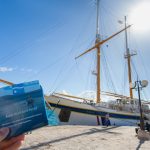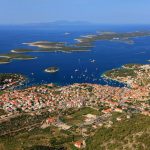An environmental tragedy for the island of Pag as one of the most beautiful, not to mention geologically and paleontologically interesting part of the island landscape, Ledenik, has sadly become part of an unregulated and unwanted landfill for discarded construction material and all kinds of waste. Ledenik is otherwise visited by thousands of tourists during the summer months and is a very popular area, but also a highly significant fossil site.
As Morski writes on the 21st of January, 2019, in addition to this area being of importance when it comes to prehistory, some of the oldest still standing sructures, more specifically examples of drywall construction on the island of Pag are located in Ledenik. Several films have also been filmed there. Unfortunately, this stunning area has fallen victim to people dumping all sorts of waste, as Radio Pag has reported.
Ledenik is extremely interesting in a geological sense. Namely, the island of Pag actually originated from billions of shells and skeletons of various dead and fossilised marine animals and is mostly composed of limestone, and it is precisely at Ledenik where a vast fossil site can be seen.
Geologists say that the basic geological structure of the island of Pag originated about 200 million years ago, while the actual formation of the island of Pag is considered by geologists to have occurred around 30 million years ago, when they believe what is now Ledenik was then initially formed. At that time, the island of Pag was connected with Velebit and didn’t have the shape of an island as it has today.
The present shape of the island of Pag was created at the end of Pleistocene era, the last ice age, about 12,000 years ago, which isn’t that long ago in the grand scheme of things. Then, transgression occurred and the sea level rose by about a hundred meters. The wetland area (part of the then Pag lake) saw the gap between the now island of Pag and Velebit filled by the sea and the Velebit channel was thus created. This marked the final act in the island’s birth as we know and love it today.
The utterly bizarre, almost Mars-like landscape of the island of Pag has been regularly contributed by bura winds which have been shaping sedimentary rocks for centuries. This is particularly noticeable on Ledenik, which is, by far, entirely unique.
All in all, Ledenik should be the City of Pag’s pride, but it seems that not everyone cares enough about the local environment to make sure it stays as precious and as unique as it is.
Make sure to stay up to date with our dedicated lifestyle page for more. If it’s just Croatia’s attitude to the environment and ecology you’re interested in, give Total Eco Croatia a follow.
Click here for the original article by Radio Pag









